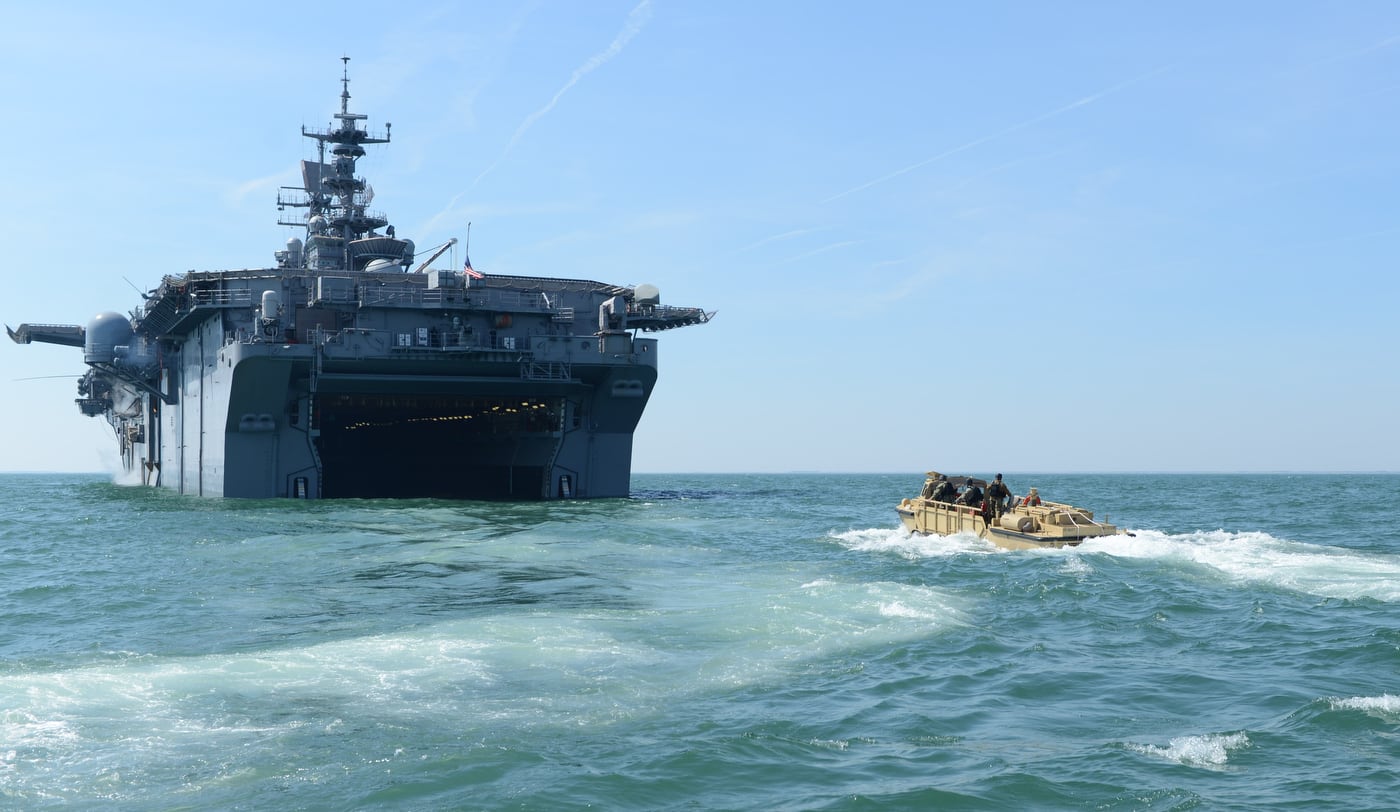During a recent test, a High Mobility Artillery Rocket System aboard the amphibious transport dock Anchorage successfully destroyed a target on land 70 kilometers away, according to the Defense Department.
The test happened Sunday during the ongoing Dawn Blitz exercise, which is integrating both HIMARS and the F-35B into an amphibious force, a Defense Department story says. Marines from 5th Battalion, 11th Marines successfully launched the land-based rocket system from the Anchorage while at sea.
“In an environment where we are operating in contested waters, we are finding a way to be able to support the land force with deeper strike capabilities,” Capt. AJ Kowaleuski, an artillery officer with I Marine Expeditionary Force, said in the story.
RELATED

The exercise comes shortly after Marine Commandant Gen. Robert Neller said that amphibious ships will need to be able to destroy or jam enemy coastal defenses to allow Marines to come ashore.
“You’re going to see precision fire delivered off amphib ships, whether it comes out of tube guns or rockets or delivered from unmanned systems,” Neller said on Sept. 21, during the Marine Corps League’s annual Modern Day Marine expo.
Neller also warned that Marines will have to “fight to get to the fight” in future wars because the enemy will be able to attack U.S. military transport ships and aircraft. However, the Marine Corps’ strategy for fighting in the littorals acknowledges that aircraft carriers and amphibious ships pose ‘lucrative targets’ for enemy aircraft, cruise missiles and other defenses.
Not only are Russia and China developing long-range cruise missiles, but the terrorist group Hezbollah and Houthi rebels in Yemen have successfully used cruise missiles to attack ships. Both groups are backed by Iran. In October 2016, several cruise missiles were fired at the destroyer Mason off Yemen’s coast, but the ship was not hit.
However, Neller said that Marines have destroyed coastal defenses for amphibious operations in past wars, so the issue now is finding ways to do the same thing from longer distances.
“If the enemy has a capability to shoot my large ship or my destroyer or my carrier from a couple hundred nautical miles away — or maybe longer — I’ve got to do something about that,” Neller said. “That’s why it’s important that all of these ships have the capability to do some sort of strike or denial, or some way to suppress that capability.”




